
UPDATED REVIEW | Jan 1, 2021 – Dexibell VIVO H7 and H3 Digital Pianos | Dexibell is a digital piano and musical instrument company located in Italy and they have been in business for a number of years and are fairly well known in Europe. They produce their piano technology at their local factory in Italy and recently started exporting their products here (in the US) but are not known by many people in the US at this point. The Dexibell company produces a number of digital piano/keyboard models under the VIVO name including pro stage portable pianos, home portable digital pianos, and a unique array of home cabinet digital pianos in a variety of very attractive finishes. The models I am reviewing here are called the VIVO H7 & H3 home digital pianos with the H7 model priced higher than the H3 model because of its upgraded cabinets, upgraded internal sound system, and upgraded key action with graded and fully hammer weighted touch. The H7 model which is Dexibell’s top-of-the-line home furniture cabinet digital piano (at the moment) with built in full size privacy panel is selling in retail stores for $4999 in polished ebony, white, and red finish and approx $4499 for matte finishes. The lower priced H3 model which differs from the H7 in terms of cabinet structure (no privacy panel on matte black and matte white colors), has a lighter and a less responsive key action and less powerful internal speaker system. They sell for $2999 to $3499 and come in 3 matte color finishes including a matte black, matte white with light pastel blue, pastel green, pastel orange, and pastel pink as special order colors for more money.
| H3 matte black |
It is important for me to say at the beginning of this review that all of the digital piano companies out there have promotional marketing content on their web sites that would indicate they produce the best digital pianos that you can buy for the money in that price range. The manufacturers list their product specifications and positive attributes that would compete with and even exceed the other brands and this is no different for the Dexibell company, and I expected as much. However, since Dexibell has virtually no previous history in the US for their products (although they are well known in Europe), it is more difficult to know what these pianos are really like since there are few, if any reviews on them. I have played the VIVO H7 and H3 many times in the recent past and closely examined them, and although it is difficult at this point for a digital piano shopper in the US to find a VIVO H7 or H3 in a local piano store to try out since there are only a handful of them right now, I intend to be as detailed as possible on these models in this review so that you can know more about them if you should be considering one for yourself.
I will be mainly discussing the top of the line H7 model primarily because it has the better upgraded key action, cabinet design, and internal speaker system but all the digital features, sounds, and control panel are the same as on the H3. The first thing that is most obvious about this H7 model as compared to any other digital piano brand or model is its unique cabinet design and color finishes. This model’s noticeably elegant appearance is low profile and very contemporary to more easily fit in compact spaces while still being the center of attention. This is due to its subtle curved stand, rounded cabinet edges, back privacy panel (which is also on the H3 blue and pink color finishes) using either polished or satin cabinet finishes (as I mentioned earlier) with an attractive silver trimmed front slow-close key cover with rounded curves at the front top of the key cover. When the key cover is closed you can even see a a partial view of the keyboard showing through if you are sitting across from the piano looking at it. Considering that Dexibell is offering an attractive white, red, or black finish on the piano with a couple of those colors offered in a more expensive high gloss polished finish in the H7 model (as I also mentioned earlier) which is a quite an attractive, elegant finish in my opinion, the appearance of the cabinets are different than any other brand or model out there and really like a work of art. But leave it to the Italians when it comes to fine art because after all, Leonardo DaVinci and Michelangelo certainly are famous Italian Artists so the Dexibell company is just following in their footsteps…right?:). Regardless, digital piano shoppers that I talk with are sometimes looking for cabinets that are different or unique in appearance being more artistic in nature, and these Dexibell pianos certainly would win in that area. Dexibell also offers optional upgraded matching benches for their black, white, and red finish pianos including for the polished black and polished white, with upgraded benches priced at about $299US each.


When it comes to replicating the organic sound of a real acoustic piano, the Dexibell company has a digital sound technology they call T2L (aka: True to Life) which is in all models of the VIVO series. The way they describe their T2L technology is as follows: “T2L is how we have called the symbiosis of the innovations developed to enhance the timbre veracity and the reactivity of the sound to multiple articulations of the pianist.” OK, that sounds really impressive but a lot of people may not understand what that means, and in a way I don’t either:). But if you try to extrapolate a meaning out of that statement, then what they are likely saying is that their piano is awesome! But the reality of it all is…how does this piano actually play and sound? What is it really like up close and personal Does it feel real like an acoustic piano, does it sound real like an acoustic piano…or does it not? That’s really the questions to ask and not be concerned with any company’s flowery descriptive language they use to try to convince you otherwise. I have seen that all too often with other brands and their bark can be much bigger than their bite:). I did not know what to expect when I first played these new pianos and was a bit apprehensive considering they are going up against the well known digital piano names like Yamaha, Roland, Casio, and Kawai just to name a few. However, after playing and examining the H7/H3 pianos over a period of time, I came away very impressed and was quite surprised as to how good my piano playing experience was on them. They look really cool in their contemporary cabinets, the internal speaker system specs are impressive for the cabinet size, and based on the descriptive rhetoric the Dexibell provides on these models, they pretty well live up to what they claim. They have some noticeably impressive grand piano sound samples in them, a good solid responsive key action, accurate pedaling with great damper decay time, and some very usable digital functions. The T2L piano sound technology includes digital sympathetic piano vibrations (strings in an acoustic piano that vibrate when other strings are played) as well as digitally reproduced organic damper resonances within the piano sound. Beyond those organic elements that are reproduced with the Dexibell technology are individual string metallic overtones that resonate when any key is played and the string is struck by the hammer inside a real acoustic piano.
They look really cool in their contemporary cabinets, the internal speaker system specs are impressive for the cabinet size, and based on the descriptive rhetoric the Dexibell provides on these models, they pretty well live up to what they claim. They have some noticeably impressive grand piano sound samples in them, a good solid responsive key action, accurate pedaling with great damper decay time, and some very usable digital functions. The T2L piano sound technology includes digital sympathetic piano vibrations (strings in an acoustic piano that vibrate when other strings are played) as well as digitally reproduced organic damper resonances within the piano sound. Beyond those organic elements that are reproduced with the Dexibell technology are individual string metallic overtones that resonate when any key is played and the string is struck by the hammer inside a real acoustic piano.
However…the first thing that anyone needs to do when wanting to play these VIVO pianos is you have to power it up like you do on all digital pianos, so you press the on button and wait for it to be ready. However, you don’t just wait for a few seconds until the piano is fully powered up to play like you do on most digital pianos, but instead it takes 50 seconds for this baby to fully power up until you can get any sound out of it. I understand this piano has some cutting edge electronics in it that are quite powerful and beyond what many other digital pianos offer so we are not talking about a toy here, although some of them take a little while to power up as well. However, when you want to play the piano then normally a person (like me) doesn’t want to wait too long to get going. If you want to power down and turn off this piano then when you press the on/off button to do that, then the user display screen asks you if you want to turn it off and when you press the button that says “yes,” it takes 9 seconds before the piano actually powers down. So the whole power up and power down process needs to be improved, but right now that’s what having some of the more advanced piano sound technology in these VIVO pianos requires. The thing about this process that could be an issue for a few people is, if you want to shut off the piano and maybe power it up right after you power it down for some reason, you have to go through the power up process again. But I am guessing that Dexibell will come up with a solution in the future to speed up the power up/down process, but for now once you start playing then the wait is definitely worth it.
Once you get this piano powered up then the H7/H3 defaults to the VIVO grand piano sound. There are 6 different acoustic piano sounds and they are called VIVO Grand, Pop Grand, VIVO Live, Classic Grand, Romantic Grand, and VIVO Upright Piano, and all of those pianos are in stereo reproduction.

 Each acoustic piano sound is recorded (sampled) from top quality real acoustic grand and upright pianos and then a newer technology called physical modeling (as I mentioned earlier) is also used in the piano sounds to enhance their realism in a big way including being able to have noticeably long, natural pedal decay times with very good long sustained volume even in the middle to upper octaves (which is normally difficult to do). So basically the Dexibell company is using the two most prominent digital piano sound technologies these days to create their piano sound which allows for unlimited polyphony in stereo which means you can play as many notes as you want sustained over the top of each other with as much pedaling, layering, and effects as you want without any note dropout at all along with no discernible sample loops when playing the piano sounds and using lots of sustain and decay time. This means the piano tones sound noticeably more authentic than many other digital pianos out there in this price range who do not use this dual technology. Of the five acoustic piano sounds offered on the H7/H3, I do like all of them in different ways and you get the sense the piano sounds are moving from one end of the sound field to the other in stereo (right to left/left to right) when playing the keys.
Each acoustic piano sound is recorded (sampled) from top quality real acoustic grand and upright pianos and then a newer technology called physical modeling (as I mentioned earlier) is also used in the piano sounds to enhance their realism in a big way including being able to have noticeably long, natural pedal decay times with very good long sustained volume even in the middle to upper octaves (which is normally difficult to do). So basically the Dexibell company is using the two most prominent digital piano sound technologies these days to create their piano sound which allows for unlimited polyphony in stereo which means you can play as many notes as you want sustained over the top of each other with as much pedaling, layering, and effects as you want without any note dropout at all along with no discernible sample loops when playing the piano sounds and using lots of sustain and decay time. This means the piano tones sound noticeably more authentic than many other digital pianos out there in this price range who do not use this dual technology. Of the five acoustic piano sounds offered on the H7/H3, I do like all of them in different ways and you get the sense the piano sounds are moving from one end of the sound field to the other in stereo (right to left/left to right) when playing the keys.


One of the acoustic piano tones that surprised me as to how good it sounded was the VIVO Upright Piano. This piano tone was recorded from a very expensive European Upright Piano using the VIVO sound technology in a way that I have never heard before in a home digital piano. A tall Upright acoustic piano that measures approx 52″ high has a piano sound that is much different than an acoustic grand piano because the strings and soundboard inside the acoustic upright piano are directly behind the front of the cabinet strung on the inside from bottom to top which make them very close to the player. So when the keys are played and the hammers hit those strings, the strings vibrate and the soundboard resonates projecting sound directly toward the player and the result is a more immediate sound that you can hear and feel. On a grand piano the strings and soundboard are a distance away from the player and the sound projects further away from the player up and down out of the grand cabinet and gives that sound more distance from the player as opposed to an upright piano which projects at a much shorter distance away from the player. The result of that sound is unique only to upright pianos and something that is very difficult ina digital piano to reproduce regardless of brand or cost. I grew up playing upright pianos so I know what they sound like and it is an enjoyable experience, although I obviously like playing grand pianos too and that would be my preference. But having the immediate feedback of the upright piano sound that resonates in a big way and offers very long pedal sustain/decay time is something that the H7/H3 pianos do surprisingly well with a lot of dynamic tonal range and expression which adds to enjoyment of playing these pianos. Also, the H7/H3 have a
Honky-Tonk and a Ragtime piano sound that is by far the most realistic reproduction of those two vintage acoustic upright pianos that I have ever heard in a home digital piano…they are that good! I almost never mention those sounds in my piano reviews because the realism of those two piano sounds in other top brands are always so poor…those piano sounds are just difficult for a digital piano to reproduce. If you like either one of both of those sounds from the past centuries, then you’ll have a lot of fun playing them on the VIVO pianos.
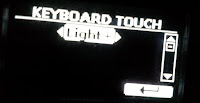 Part of playing a a real acoustic piano is being able to get tonal expression out of your music which is also known as dynamic tonal range. Normally this is done by simply playing the keys with less or more force from the fingers and then the sound will respond by not only being louder and softer, but also along with the piano sound being more mellow and progressing as you play the keys harder until the piano sound is very bright and more metallic with strings vibrating at faster rates. This is the way real pianos work and you should not have to plays the keys too hard to hear these changes. However on the H7/H3 piano the touch sensitivity control defaults to normal which is actually where it should be on most digital pianos. However, in my opinion this “normal” setting on the H7/H3 makes a person have to play too hard to get natural tonal changes and expression out of the piano sounds. The remedy for this is to change the touch setting to a lighter touch and then it will improve that expressive response experience and will give the player more natural expression without having to bang as hard on the keys. The dynamic tonal range (expression) of the acoustic piano sounds in the H7/H3 are actually very expressive on these new models when playing at different key touch velocities from very soft touch to very loud and in-between.
Part of playing a a real acoustic piano is being able to get tonal expression out of your music which is also known as dynamic tonal range. Normally this is done by simply playing the keys with less or more force from the fingers and then the sound will respond by not only being louder and softer, but also along with the piano sound being more mellow and progressing as you play the keys harder until the piano sound is very bright and more metallic with strings vibrating at faster rates. This is the way real pianos work and you should not have to plays the keys too hard to hear these changes. However on the H7/H3 piano the touch sensitivity control defaults to normal which is actually where it should be on most digital pianos. However, in my opinion this “normal” setting on the H7/H3 makes a person have to play too hard to get natural tonal changes and expression out of the piano sounds. The remedy for this is to change the touch setting to a lighter touch and then it will improve that expressive response experience and will give the player more natural expression without having to bang as hard on the keys. The dynamic tonal range (expression) of the acoustic piano sounds in the H7/H3 are actually very expressive on these new models when playing at different key touch velocities from very soft touch to very loud and in-between.
Beyond the standard velocity curve touch settings (soft, medium, hard touch), Dexibell goes many steps further by allowing the player to literally design their own touch curve settings to customize a person’s exact playing technique and how they normally would play the keys from very soft to very hard playing and how the piano sound responds to a person’s key movement under all finger pressure levels on the keys. This is something that a good piano technician could do in a real acoustic grand piano in
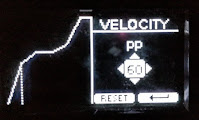
being able to regulate the key action to respond to the demands of a more advanced player with subtle changes in the expression of the physical key action which then affects the piano sound and expression. These kinds of precise “velocity” adjustments are typically not necessary for beginners through intermediate players but those people who play at more advanced levels (like myself) would definitely appreciate these kinds of smaller, more precise adjustments in touch control. However a professional acoustic key

action regulation and adjustment can cost hundreds of dollars to do in a real piano. Well…for the first time that I know of in any digital piano brand, the Dexibell H7/H3 now has the capability of easily designing custom touch sensitivity curve adjustments for five levels of key touch including separate independent touch controls for each level including PP, P, MF, F, and FF which means very soft gentle playing to very hard aggressive playing with 127 steps of adjustments for each level…wow! So each one of those levels can be
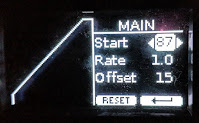
adjusted independently and then be put altogether to accurately give you tonal expression playing like no other digital piano can do that I have ever played. Once you design the key touch sensitivity that fits your playing skills the best, you can then save those settings into memory so you don’t have to do it again, unless you want to. It’s a tremendous new technology that allows for this sophisticated feature to exist and it definitely works well, and when I tried it I definitely noticed a tonal response and expression of sound and touch like I have not experienced on any other home digital piano for any price. However, if you do not play well or don’t want to mess around with all this technology, you can just choose factory preset settings for soft, medium, and hard touch to get quick control, no problem. But for those of you who are not afraid of technology, like to experiment, and play at an advanced playing skill level where you want precise control over the piano sound, then this special custom tonal velocity feature will definitely be exciting to have.
Speaking of piano sound, one thing I did notice when playing three of the main stereo acoustic piano sounds is that in the first octave on a few of the notes, when playing at a normal touch from softer to harder using some sustain pedal or holding the key down for a couple of seconds or more, the piano sound had a noticeable growling tone that is heard above the actual piano sound. This anomaly is heard through both the internal speakers and using stereo headphones but is more apparent using headphones. *UPDATE – I took the liberty of directly
contacting the Dexibell company in Italy and spoke with the people who run their factory to let them know my concern with this matter and that I really like the H7/H3 pianos but had a concern about this piano sound abnormality. I have done this (contacted the factory) with other digital piano manufacturers in the past concerning what I believed were issues with their product but the responses from some of them were either very slow or not responsive at all. After speaking with the product specialist at Dexibell I am happy to report that not only did the Dexibell company respond to me swiftly but they also researched my concern with their software sound engineers and were able to do an almost immediate update to those piano sounds and specific notes I had told them about and they resolved the issue to my satisfaction.
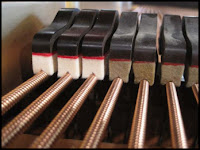

Another thing about the piano sound that I noticed on these models and something that I rarely talk about in my digital piano reviews of other pianos, are the lower bass notes and specific individual sustain/decay time on those notes when dampers are used. For those of you who don’t know about this subject and that would likely be more than 90% of everyone shopping for a digital piano, it is a fact that inside all real pianos are felt dampers (long, thin rectangle black/white parts over the strings) and when you play most keys on the piano (except for the last upper octave+) the dampers that stop the strings from vibrating are lifted off the strings so the strings can vibrate and make a sound. Then when you let go of the key, the felt damper drops back down to the string and mutes it so that it cannot make a sound until you play that key again. That’s the physics or nature of the piano. If you play a key fast and repeat that note up & down without holding down a sustain pedal then you are playing short notes (staccato) and the dampers are moving very quickly to mute each note when the key goes back down. Each string in an acoustic (regular) piano has a different thickness for different tonal frequencies and the low bass notes have the thickest brass wound strings. When the damper inside the piano is released from the thickest strings when the key is being played and then goes back down on the string to mute the sound, the bass notes have a delayed amount of time for up to 2 seconds each (or less) before that string is completely muted, whereas the higher brass and steel strings are muted immediately when the dampers return to the strings because those strings are not thick. The delay in the bass note being muted is due to the fact that the bass strings are so thick and vibrate so much that a small felt damper cannot immediately stop the vibration when it goes back down on it so you get this small delay on the bass note sound from stopping. This very unique detail in actual acoustic piano behavior is present in the VIVO H7/H3 pianos due to the advanced digital piano technology being used in these models. In fact the Dexibell technology senses how hard or quickly you press the key and “randomly” changes the delayed damper mute time on those specific notes just like a real grand piano would do…so it’s not always the same…wow, not bad for a digital piano! So while most people who buy pianos would never know this or be concerned at all that the piano could do this in the bass section, when they actually hear big acoustic grand pianos being played that big bass string sound and delayed muting is in the song and without it the bass strings would sound more choppy and not as big.
Now it’s time to talk about the non-acoustic piano instrument sounds which total about 75 different sounds, most of them including the organs, strings, orchestral, electric pianos, synths, bells, percussive tones, choirs, etc are excellent in producing a big, bold, realistic sound…especially the strings, orchestra, organs, and harpsichords, and there are a big variety of them more so than what most other digital pianos offer. For people or places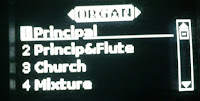
who love more traditional classical piano, baroque, or organ music such as the sound of strings, choirs, harpsichords, and pipe organs along with acoustic pianos, then the VIVO pianos definitely excel in this area and are more advanced in tonal realism and stereo imaging for these instrument tones than Roland, Yamaha, Casio, and others in my opinion. These sounds are rich in tone, beautiful and authentic in their rendition, and really make the music come alive. The classical/baroque harpsichords and organs are especially impressive and better than any other top home digital piano from any of the major brands out there. When
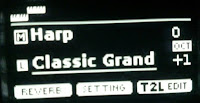
layering these instrument sounds together with an acoustic piano sound in the H7/H3 or switching from one sound to the next in real time (such as piano > strings, harpsichord > organ), the transition to the next instrument sound from the first one is absolutely seamless while playing and there are no breaks or drop-outs of sound at all. This kind of functionality takes a much more sophisticated digital sound technology to allow this to happen, 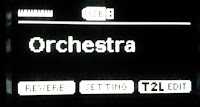
which many digital pianos do not have, and it really pays off when you are in a live, real time performance setting (or just at home) and you want to change sounds occasionally as you play your song. Also these instrument tones are editable such as being able to electronically change octave up or down of that sound when playing solo or

mixing with a piano, harpsichord, organ, or other sounds. The tones have excellent sustain qualities and the damper pedal can do continual sustain hold so the sound does not automatically fade out or cut off . The tones are very expressive and realistic although a few of them need some help such as the guitars, but overall these instrument sounds are a big highlight of these pianos and I enjoyed playing and hearing them very much. They are also fairly easy to use with the control panel once you understand the layering and/or split controls. There is also a “favorites” function which can be stored as internal memory and this allows you to select sounds from the piano and put them in a “favorites” list so you can instantly recall these sounds in your internal memory sound library rather than scroll through all the preset sounds to find what you want, so that is a pretty cool feature.
OK, now on to the key action which is the heart & soul of any piano. The VIVO H7 has a 3-sensor ivory feel graded and fully piano weighted action and custom made exclusively in Italy with synthetic ivory material on the white keys and the action movement is very responsive when playing a variety of music. The responsiveness of the keys when playing fast or slow as well as hard or soft is noticeably way above average and the keys go down and come back up in a way that even advanced pianists will appreciate. However, the H7 keys are a bit firm (for some people) to press down (called down-weight) and this could be a possible issue for a few people who want a physically lighter key action touch. This slightly firmer type of key action may be a bit more challenging to play for longer periods of time due to possible finger and/or hand fatigue that could occur in some people. But a slightly firmer key action can also be a good thing and help to build up finger muscle and hand strength which helps people play piano more dynamically,
so it just depends what is better for your situation. Also, a slightly firmer key action that moves quickly (which this one does) usually allows for more dynamic tonal range when playing at different velocities on the keys so there are some distinct advantages to a slightly firmer key action as long as the piano sound works in harmony with the actual key movement, which the H7 key action does. Actually I have played some high-end top name acoustic grand pianos including Steinway, Kawai, Baldwin, etc and found many of them feel similar to the VIVO H7 piano in terms of key action down-weight. So in reality the slightly firmer but very playable and responsive H7 key action is a good thing. The H3 key action is a bit lighter and not as responsive as the H7 key action with no key weight grading and no ivory fell keytops. For me, I can can play on a variety of key actions and mostly feel comfortable with them because I can compensate for their anomalies, but this H7 key action feels very responsive and well balanced for me personally and I like it very much and can easily play it for hours at a time.
The VIVO piano key actions in the H7/H3 do not have the “escapement or letoff” feature that other digital pianos in this price range have such as Roland, Yamaha, or Kawai which try to simulate the feel or response of an acoustic grand piano when the keys are played very slowly and you feel a slight hesitation or notch in the movement when playing. This would be a good feature to have but it’s not really critical because even on digital pianos which have this function it’s still a simulation at best and not something that comes close to the real thing. It’s also not something that you would be able to feel in real upright acoustic pianos because most of them don’t produce that kind of “feel” and the vast majority of people who have regular acoustic pianos have upright style acoustic pianos in their homes as opposed to grand pianos, so escapement/letoff is something most people with acoustic pianos would never have anyway.
The pedaling on any piano for all three pedals, especially in this price range, needs to be accurate and responsive for people who may be playing at a higher skill level. The right side sustain damper pedal should have the half-damper pedal feature which allows for a variable amount of sustain depending what position the pedal is located in when you press down or release the pedal at different points. Also there is something called damper resonance and pedal decay time for the piano sound. Damper
resonance is the organic sound you hear when the the dampers in a real piano are released from the strings when pressing the sustain pedal down and you would hear natural vibrations in the piano when the pedal is used. Decay time is how long it takes for the piano sound to fade away when playing a note and holding down the sustain pedal or playing and holding down a key until you hear the piano sound totally disappear. The VIVO pianos do have very good damper resonance effect which is adjustable and sound great and adds to the realism of piano playing. The damper/sustain decay time is noticeably more realistic with a much longer duration on the

grand & upright piano sounds than most of the other brands. In fact the length of decay time in the bass section is about 30 seconds and in the middle to upper octaves is about 20 seconds. I have heard much shorter piano sustain decay times on other brands and models of digital pianos with some not going much over 7-10 seconds so the Dexibell sustain/decay technology allows for nearly 3 times that of many other brands. With the high definition Dexibell sampling technology combined with their proprietary physical modeling technology, they have surpassed the limitations that I have seen in other digital pianos, especially with regard to being able to have beautiful sustain & proper volume time that fades out slowly and with equal distribution from the

bottom of the keyboard notes all the way to the top octaves. It really is amazing what Dexibell has done in this way and I believe the more advanced pianist out there will really appreciate this feature. All three pedal function like a real acoustic piano although the pedals are physically a bit noisy when they go up & down, but real acoustic piano pedals can be somewhat noisy as well. The spacing between the pedals is a bit smaller than I would like it to be with
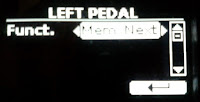
about 1.5″ of spacing between the pedals as opposed to 2″ of spacing between the pedals on most other brands and models of digital pianos. This may be important for some people who are not in a more precise sitting and leg position when they are using the pedals, but for many people it may not be an issue at all. That spacing issue is something I am sure the Dexibell company could easily improve upon in future models down the road. I am a bit picky when it comes to these things so that’s why I mention it:). It is worth mentioning that beyond the normal pedaling functions, Dexibell offers important pedaling control over internal sounds and features of the piano so that you can trigger some function changes with your pedals without taking your hands off the keyboard to press buttons;.
The VIVO home piano series has an LCD display screen and buttons under that screen off to the left side of the keyboard which has become more common lately among many digital piano brands in this price range including Yamaha, Casio, Kawai, and a few others. The LCD display is bright and easy to see. Having all the controls and display screen off to the left side does give the pianos a more minimalistic appearance and a lot of people like that. However, the material surrounding the display screen along with the material surrounding the buttons below the screen is a thin shiny black plastic that blends in with the piano, which is nice but that shiny black plastic can collect and show fingerprints and scratches when pressing buttons along with showing potential dust because that black plastic material is reflective. I would have much preferred a matte black non-glare finish on that panel instead of what Dexibell has chosen to use, and a matte black material (such as what Yamaha & Kawai are using on their digital pianos) would have been a better choice, although the shiny black is a nice color. The buttons below the display screen are easy to press and are light gray, dark gray, and black colored buttons which is fine but the black buttons are difficult to see because they blend right in with the black plastic on the control panel. Those black buttons should have been in an easier to see color such as white, yellow, or red, etc in my opinion. The buttons are what allows you to access all the functions and features in these pianos and although some of the buttons on the control panel are fairly obvious as to what they do, overall they are not very intuitive.
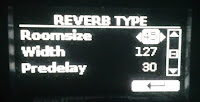 Another area on the control panel that can be somewhat confusing to use are the functions called Menu, Settings, and Edit. They all do different things and control different important aspects of the piano but unfortunately it can get a bit confusing as to what button to push for the function or feature you might be looking for. You might want to control volume of the layered or split sounds, or maybe control electronic touch sensitivity for the key action, or perhaps change split point on the keys for your split mode or change the octave for one or two of the sounds in a layered sound or split. So what some people must do is read the owners manual to help you understand where functions & features are located among the control panel buttons so you can bring them up on the LCD display screen more intuitively and then be able to control and change them properly. One of the more disappointing parts of using a couple
Another area on the control panel that can be somewhat confusing to use are the functions called Menu, Settings, and Edit. They all do different things and control different important aspects of the piano but unfortunately it can get a bit confusing as to what button to push for the function or feature you might be looking for. You might want to control volume of the layered or split sounds, or maybe control electronic touch sensitivity for the key action, or perhaps change split point on the keys for your split mode or change the octave for one or two of the sounds in a layered sound or split. So what some people must do is read the owners manual to help you understand where functions & features are located among the control panel buttons so you can bring them up on the LCD display screen more intuitively and then be able to control and change them properly. One of the more disappointing parts of using a couple

of digital functions that I personally like to use on digital pianos is the way the H7/H3 handles the reverb/echo effects and the digital transpose key that you are wanting to play in. On the most digital pianos that have reverb effects or transpose feature is the ability to simply turn those functions on and off with a dedicated button. In other words once you set the type and amount of reverb you want on an instrument or piano sound (which adds to the realism of that sound) and also the transposed key you want to play in just in case you need to have the song come out in a different key from the one you are playing in, then you can just turn the feature on or off whenever you want to from a button on the panel.
Another special effects feature of the VIVO pianos is the additional special effects beyond just adding reverb. The additional special effects are the popular Phaser, Chorus, Flanger, Vibrato, EQ, Delay, Rotary, Tremolo, among others. These effects are used by people to add a special realism to certain instrument sounds for better authenticity reproduction of those instruments along with being able to create brand new

sound environments that change the preset instrument sounds in ways that make them entirely different. Many digital pianos have special effects features built into them but most special effects in most digital pianos are just OK and sometimes not very good at all. As an example, the vintage electric piano and organ sounds in the VIVO pianos that many professionals use along with people who just play recreationally and enjoy those sounds include the famous Fender Rhodes electric pianos, Wurlitzer electric pianos, Yamaha electric pianos including DX7, Hammond organ tones including the famous C3, B3, and others, along with vintage pipe organ tones. These vintage tones are generally difficult to reproduce in these new home digital pianos and you generally need a pro stage keyboard to do it. But on the new H7 and H7 these special effects are so powerful and so good that you can create the exact vintage sound reproductions that those older and popular pianos and organs had.
The VIVO home pianos also have audio wav file recording and playback feature along with playback of MP3 audio song files so it is versatile when recording music. The player can record their song using single tones, layered tones (aka: coupled tones), or split tones and then be able to save that song on a USB flash drive for storage and playback later on. This is a very nice function to have and works well. Also while the recorded song is playing back through the piano speaker system you can playalong

with it playing any notes on the keyboard and choosing any instrument/piano sound on the piano. So it’s like having two people play at the same time only the player has full control. You can also change the playback volume of the recorded songs while they are playing back so that if you want to play along live with the song then you can easily balance the playback volume with the live volume. Along with the recording feature which is a great way for
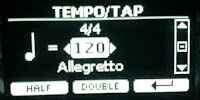
piano students to hear themselves and what they really sound like (that can be scary sometimes) these models also have adjustable built-in metronome to help with rhythm and timing which is also great for piano students of anyone trying to learn a new song. The metronome is easy to use and adjust but turning it off is not intuitive and can be a bit confusing because there is instant on/off feature just like with the reverb and transpose buttons. All Dexibell would have to do is update their software to include direct button access to on or off for those specific buttons. Not sure if those Italian people understand that “simpler is better.” They certainly understand how to produce a great sounding piano but they need to produce easy to use pianos when it comes to some of these various features I mentioned so maybe they can upgrade this but we’ll have to see what happens. In the meantime it all works once you get the hang of the process to do it.
When it comes to playing a piano one of the things many digital pianos lack is a high quality internal speaker system. A regular acoustic piano sound is generated by the strings and then the wood soundboard amplifies those strings and the sound is big, bold, and resonates in a organic natural way. If you have a good upright or grand piano then you hear full tone with great frequency response, especially in the bass section. When playing digital pianos, many of them can sound “tinny” and somewhat fake because of the speaker system not being able to amplify and put out the sound in an effective, natural way whether playing a loud volume or softer volume. The VIVO H3 internal speaker is certainly adequate and within its price range it does keep up with its competition in that it offers 70 watts of power (which is a bit more than some of the other brands in this price range) going into 4 speakers (2 woofers/2 tweeters). The H7, however, is where the sounds in this piano really come to life because of its noticeably upgraded internal speaker system with 112 watts of power going into 5 speakers which includes 2 woofers, 2 near-field tweeters, and one large sub-woofer with both of the woofer speakers and
sub-woofer housed in a separate acoustic box chamber that sits just under the piano keyboard with those speakers slightly angled toward the player. This speaker/amplifier configuration with the tweeter speakers projecting upward behind the keyboard and towards the player gives the piano a clear, powerful, and natural sound system that makes the VIVO H7 sound big, full, and resonant (like a big grand piano) with great bass response, unlike many other compact digital pianos in this price range. In fact, the dB sound pressure maximum (volume) level on the H7 is 113.6 dB as opposed to a much higher priced top-of-the-line $7000 Roland
LX17 digital piano which has a maximum dB sound pressure of 112dB. This makes the Dexibell H7 more powerful than the much more expensive, more well known Roland digital pianos which is surprising but true. Also, I use headphones quite a bit in my teaching studio and noticed that the piano and instrument sounds coming through the headphones were amazing and had plenty of power to produce a very full through the headphones which is not always the case with home digital pianos. Sometimes the headphone amplification can be weak but not on the VIVO H7/H3…it was excellent in full sound and quality sound, and that was a big plus for me. So with regard to the VIVO “H” models, both are good but the H7 is definitely the way to go over because of the much more impressive internal stereo sound system, especially if you want your piano to sound big, full, resonate, like a big upright or grand piano.
The H7 & H3 have pretty much all the connectivity that someone would want in a digital piano including stereo audio outputs, stereo audio input, USB to external device, USB flash drive input, 2 stereo headphone jacks, and Bluetooth audio streaming. The USB output jack allows you to connect with external devices such as iPads, computers, etc so that you can utilize external technology for a more fun interactive experience,
especially given all the very cool available music/piano related apps out there. The USB flashdrive input can save audio wav file song recordings to build a library of your recorded practice songs as well as let you load them back into the piano for later use and playalong. That’s a great way to practice your songs and hear them playback later on. The H7 /H3 does not have MIDI recording capabilities. The Bluetooth audio streaming feature is easy to use and set up in the pianos and allows the digital piano internal speaker system to be used as your personal home stereo audio system so you can run
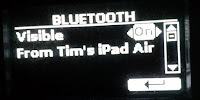
external Bluetooth devices through it to play MP3/iTune files from your iPhone, iPad, etc or from any bluetooth music device. I have played my own personal iTune files through these pianos and with the H7 those songs sounded incredible with clear tone and big resonant bass response, and the maximum wireless Bluetooth range was very impressive as well. Most people I know do not have a home speaker system as nice as what is in the H7 with that speaker box and sub-woofer system, so having access to the H7 speaker system through Bluetooth audio or even regular stereo audio input jack is pretty cool. The H3 speaker system is good and for many people will be impressive by that one as well, but it comes nowhere near the higher quality, fuller sound coming through the H7 speaker system, but you do get what you pay for:).
I believe it is important for piano shoppers know that these pianos do not have things like multi-track recording, General MIDI file playback, drum rhythm patterns, hundreds of instrument sounds, and other extra “bells & whistles” that some buyers may not want or need. What they do have are the “bread & butter” features that most shoppers look for when wanting a new digital piano and those features focus on the piano playing experience along with some very high quality beautifully designed instrument sounds which can be played individually or simultaneously with the piano sounds to make the musical playing & listening experience authentic, expressive, and inspiring. By the way, if you did want or need more instrument sounds, drum rhythms, or other extras which I happen to personally enjoy using, you can get that by connecting an iPad (or iPhone) to these pianos and downloading some very cool new Dexibell iOS apps so that you can much more easily and intuitively control the VIVO pianos and most of their functions from a VIVO editor
controller app when using your iPad. Doing it this way takes away many of the limitations in the piano control panel and instead you actually see the names “layer, split, transpose,” etc for those features like they should be and through an iPad be able to control so many other things within the Dexibell operating system that you other wise may not have used. You can also add interactive professional sounding accompaniment styles from an app they call X-MURE which include very professional sounding backing track styles which are recorded by real live studio musicians in a recording studio using real live instruments instead of artificial MIDI backing tracks like other companies do who have less realistic sounds. The interactive accompaniments include just about every genre of music including Latin, rock, big band, swing, contemporary, country, etc along with control of drum breaks, variations, along with a digital mixer all within the app.
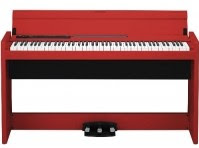 To sum it all up, even though the Dexibell VIVO H3 and H7 pianos have a couple of functionality quirks to them including an owners manual which could be better because of spelling and grammar mistakes (translated from Italian to English and not doing a great job of that) and things I would like to see improved in explanations, overall for the price these models are exceptional pianos. The piano sound authenticity and the speaker system, especially on the H7, combined with solid key action and pedaling, are impressive, and if you are an advanced pianist then you will be especially impressed. Advanced pianists know that when playing a piece of music on a high quality acoustic grand piano, that the outcome of that performance in terms of the piano sound is always different from one performance to the next. This is because the piano is acoustic and made of natural organic parts and that overtones, vibrations, and resonances happen randomly depending on how hard you press the keys, what notes you playing, who you are pedaling, how fast you play the keys, and so on. This natural and random nature of the piano sound is what is missing in most digital pianos, regardless of price range. You can’t get it with just sampling technology, you can’t get it with just physical modeling technology, and you can’t get it in any other way other than a perfect balance of high definition sampling technology coupled with precise computer generated physical modeling technology. I believe that most piano shoppers do not need to necessarily know how all of this is all done as much as you need to know that Dexibell has done it, and done it well based on my considerable playing time on the H7 and H3.
To sum it all up, even though the Dexibell VIVO H3 and H7 pianos have a couple of functionality quirks to them including an owners manual which could be better because of spelling and grammar mistakes (translated from Italian to English and not doing a great job of that) and things I would like to see improved in explanations, overall for the price these models are exceptional pianos. The piano sound authenticity and the speaker system, especially on the H7, combined with solid key action and pedaling, are impressive, and if you are an advanced pianist then you will be especially impressed. Advanced pianists know that when playing a piece of music on a high quality acoustic grand piano, that the outcome of that performance in terms of the piano sound is always different from one performance to the next. This is because the piano is acoustic and made of natural organic parts and that overtones, vibrations, and resonances happen randomly depending on how hard you press the keys, what notes you playing, who you are pedaling, how fast you play the keys, and so on. This natural and random nature of the piano sound is what is missing in most digital pianos, regardless of price range. You can’t get it with just sampling technology, you can’t get it with just physical modeling technology, and you can’t get it in any other way other than a perfect balance of high definition sampling technology coupled with precise computer generated physical modeling technology. I believe that most piano shoppers do not need to necessarily know how all of this is all done as much as you need to know that Dexibell has done it, and done it well based on my considerable playing time on the H7 and H3.
any other digital piano I know of, especially in the polished black, white, and red cabinets of the H7 although the matte black colors look great too and are a bit lower maintenance because they don’t show fingerprints, dust, and smudges like the polished finished might do. The H3 cabinet color options are unusual because they come in some unique custom colors as I mentioned before including pastel pink, light blue, olive green, and deep pastel orange. I will also say that it is
Finally, the best way for me to describe what the new VIVO “H” digital pianos are really like in person is to compare it with a pallet of colors displayed on a computer screen or new flat screen high definition color TV. The more colors and shades of colors that the computer or TV can generate and be seen, the more expression and authenticity you get out of that picture. Have you seen or do you own the latest flat screen high definition LED TV in those larger sizes that are being sold at stores these days? The pictures on those TV’s are simply amazing and seems so real it feels like you can almost touch the picture in the screen. The expression of those colors are beyond what most people thought possible just a few years ago. Well…that’s what it is like on these new Dexibell VIVO pianos in my opinion, especially the H7. The musical “colors” (dynamic tonal range conveyed by the piano action) that can be expressed by the player on these pianos is beyond what people have thought is possible on a digital piano, even up against some of the more popular well known brands. I suppose if Dexibell offered their piano technology in a more traditional piano style cabinet (like the other digital piano companies do) then perhaps more people in the US would like that. But for now the Dexibell company offers these distinctive, contemporary, compact style piano cabinets which in my opinion give the piano is unique visual flavor. It’s a worthy combination of sound and looks that goes up against the best in this price range.
Listen to this audio track below of Dexibell’s brand new “Yamaha Concert Grand Piano” recorded and processed directly from Yamaha’s best 9′ concert grand piano…AMAZING…like being there! Make sure you listen to this with a good set of stereo headphones plugged into your computer, or other device.
The Dexibell new audio track below is of a German Steinway Concert Grand Piano. Beautiful tone just like the real thing. Make sure you listen to this with a good set of stereo headphones plugged into your computer, or other device.
Something completely different from Dexibell…a full orchestra sound below that is natural and not artificial like is normally the case on other digital piano brands. This sound is gorgeous and definitely not something found in other home digital pianos. Imagine mixing this sound with the German Steinway Concert Grand in this piano and playing them at the same time…I’ve done it and it’s awesome. I guess you can tell that I really like this instrument:)
If you want more info on new digital pianos and LOWER PRICES than internet discounts, please email me at tim@azpianowholesale.com or call direct at 602-571-1864.
*Below are three videos produced by Dexibell with the first two showing short performances of the “Concert grand piano” sound on the H7 digital piano in video 1, and then “Pop piano” layered with full pad background sound in video 2 playing in a lush, beautiful legato sustained fashion with surprising big bass response ….very impressive. The third video is a longer video showing different aspects of these pianos along with how the iOS work in real time. I recommend you watch these videos to learn more about these new pianos:)






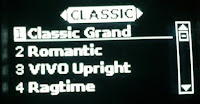
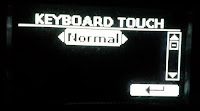
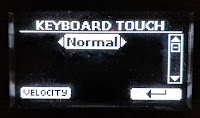

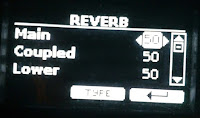


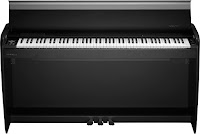











Hello Tim
Thanks for your review of the two Dexibells. I am a percussionist and I have been playing the piano for many years as well. The past twenty years or so I owned a Yamaha CVP 107. Its key action and sound was ok by the standards back then. Last year I realized an old dream, a Hammond C3. And now I wish to replace the CVP 107 with a new digital piano. Your review made me look beyond Kawai CS11, Roland LX-17 and Yamaha CLP-685. Of the three the Roland LX-17 comes closest to my demands. Recently, I have played the Dexibell Vivo H7 using headphones since the dealer's demo room had way too much echo. Through the headphones the sound quality, the dynamics and the expressiveness convinced me more than that of the Roland LX-17. Tomorrow I do a direct comparison without headphones in a proper demo room. I am quite excited already…
Very detailed review! How is the key action firmness compared to the Yamaha CLP685?
And is there any way to order the H7 online? The closest dealer per their website is 6 hr drive away. Yikes!
Thank you for your review of this instrument. I just bought an H7 here in Tulsa, Oklahoma, and I've been trying to explain to people why this instrument is different from every other one in its price class that I've ever played – and your statement that it's "alive" sums it up perfectly. This instrument was so clearly designed with care and attention to the physics and mechanics of high-guality acoustic pianos – and I'm thankful to own one.
I just recently stumbled onto the Dexibell brand. In fact, of all the places, a couple of Dexibell Stage and Portable Pianos turned up on the Target.com website! Weird huh? My first assumption was that this was some new cheap brand, but when I saw the pricing, I realized that these must be serious products. Long story short, I went to the Dexibell website and started listening to all the samples offered in their pianos. I discovered that, while other features certainly vary model by model, the one thing that doesn't vary is the set of samples (sounds) built in – as best as I can tell, from their cheapest to most expensive model, you always get all the same excellent samples. This, to me, is fantastic and pretty much unheard of. I am interested in one of the H-model home pianos as well as either a stage or portable piano. I'm hoping a local dealer carries (and actually has on display) some of the Dexibell models so I can decide what I want to buy. This is the first time in almost 25 years that I have heard a digital piano and thought to myself, "This might actually be able to replace our Yamaha C5 so we can regain the space in our living room. I do realize though that, as good as the H7 sound system is, it will be difficult to generate that immersive sound of an almost 7 foot grand piano. But the H7 probably comes the closest to being able to pull this off. Thanks Tim for a very detailed review.
Dear Tim, how is your opinion about H3 keyboard? Could you give us some details? Can it be good for beginners and advanced player? Thank you. Luca
Has anyone been able to compare the H7 keybed to a Kawai MP11 ?
The Kawai MP11SE has a noticeably more realistic piano key action…but comparing a portable digital stage piano from Kawai to a home cabinet piano by Dexibell with all the other features the Dexibell H7 has is not a fair comparison.
Will you be reviewing the new H10 soon?
Proud owner of Dexibell S7 PRO! I chose to support a small company based not too far from my home (i was born and live in central Italy), and am very happy to have done that! I can confirm the support is incredible fast in rensponding, and also takes care of the customers. I wrote them for a question about the midi merge (default with the usb-midi, but not present at the moment via the midi din) and they gave me an alternative solution, other than say they will think about implement this feature in next updates. Furthermore, the quite impressive usb capabilities (usb audio 24bit 48Khz, usb host for other keyboards, and so on..), the new features provided to ALL the lineup of products with every update, and the expanding sound library (not as huge as the Nord one, but increasing, and with the Platinum Piano and EP sounds definitelly worth a try!), make me totally happy with my purchase.
These are the best reviews I've ever seen!
Great review read here for fun. I bought the Vivo S9 a couple years ago for a song (punny?) and it is awesome.
Thanks for the work!
best reviews I've ever seen;)